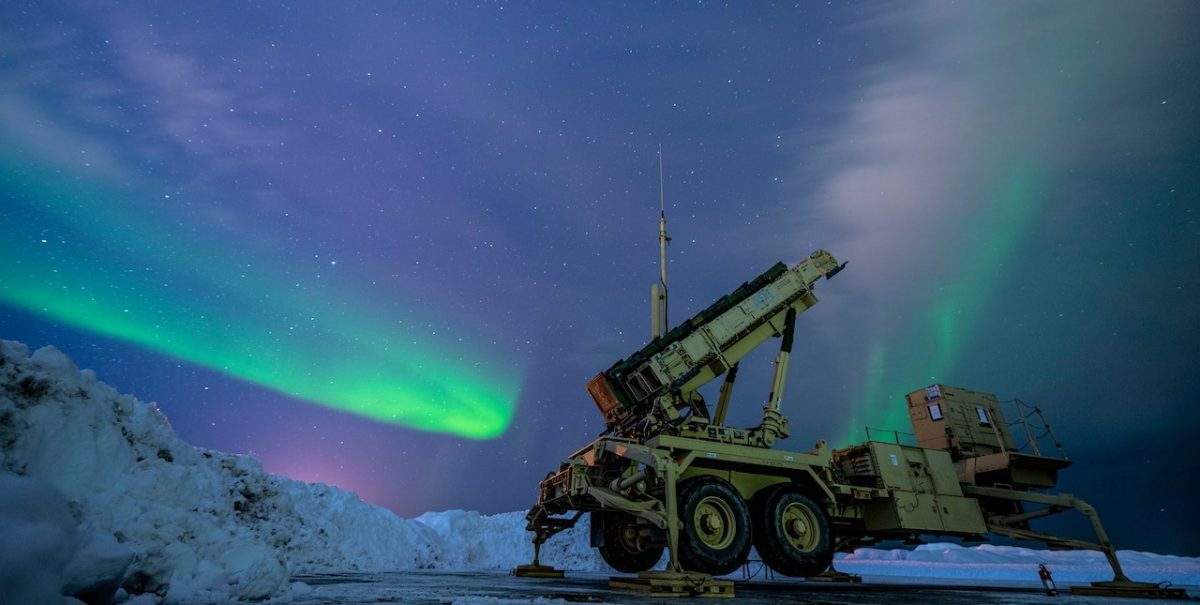In one of the Kremlin’s more bizarre comments, Nikolay Korchunov, Russia’s ambassador at large, complained to the semi-official news source RT about alleged NATO military expansion in the Arctic, a region where Russian forces dwarf those of the western alliance. He warned that “a set of necessary measures, including preventive ones,” would be take
Vladimir Putin recently named the development of the Arctic as the country’s strategic priority. Last year, NATO Secretary General Jens Stoltenberg said that Russia posed a strategic challenge to the alliance in the Arctic, calling for an expanded military footprint in the region.
According to the U.S. department of Defense, Russia has been expanding its military bases along its Arctic coastline and its Nagurskoye airfield on the Alexandra Land island in the Arctic. Russia has also been using its Arctic facilities to test new weapons, including the Poseidon 2M39 nuclear torpedo, a device launched from an Arctic-based vessel designed to create a tsunami along the eastern seaboard of the U.S. coastline.
In 2021, Air Force Gen. Glen D. VanHerck, during a hearing before the House Armed Services Committee, noted that “We’re not able to have the persistence that I need to compete day-to-day in the Arctic.” Russia has 46 ice cutters, including seven that are nuclear powered, and 12 more are under construction. Although China isn’t an Arctic nation, they have two ice cutters and another under construction. The U.S. Coast Guard has a mere two ice cutters. Cleary, the U.S. Navy and the Coast Guard are overmatched by Russia’s naval and ice-based strength in the strategic region, a fact that produces extraordinary danger for both America and Canada.
VanHerck said Russia has reopened and strengthened Cold War military installations that were once shuttered. “They absolutely have a vested interest in the Arctic, and they also want to ensure that it’s secure for their efforts…” he notes.
The challenge has been building for several years. In 2018, Rose Gottemoeller noted that “NATO must be more active in the area… there are real military challenges developing to which the NATO alliance has not paid sufficient attention for many, many years and we need to up our game…”
Several years ago, the U.S. Naval Institute quoted Coast Guard Commandant Admiral Paul Zuknft’s statement in support of new icebreakers:“If you do not have presence to exert sovereignty, you’re a paper lion.”
A RAND study stated that “Russia’s recent military activity in the Arctic raises questions for the United States as to what types of Arctic military capabilities it needs as part of an overarching strategy to ensure credibility at the negotiating table and an ability to deal with crises.
In July, Homeland Security Subcommittee on Transportation and Maritime Security Chairman Carlos Gimenez (R-FL) stressed that “For the last decade, Russia has been building up its military capabilities in the Arctic, including its fleet of heavy icebreakers. …Additionally, the People’s Republic of China, despite having no sovereign territory within the Arctic region, is attempting to stake out interests in Arctic affairs. In 2018, the CCP declared the PRC to be a so-called “Near Arctic Nation.” The CCP and state-owned entities own and operate icebreakers and other polar capable ships, and during the last decade, these entities showed an increased willingness to transit their vessels through Arctic waters.”
Giminez warned “The United States cannot afford to ignore this increased interest in the Arctic from near-peer competitors. I am concerned that the delays the Coast Guard is experiencing with the development and deployment of the new Polar Security Cutters will negatively impact the Coast Guard’s ability to carry out its diverse mission set and protect the homeland in the Arctic.
Photo: The northern lights glow behind a Patriot launcher during Exercise Arctic Edge 2022 at Eielson Air Force Base, Alaska, March 5, 2022. The equipment—assigned to 5th Battalion, 52nd Air Defense Artillery Regiment—was integrated during the exercise for simulated air and missile defense in austere arctic environments (DOD)
